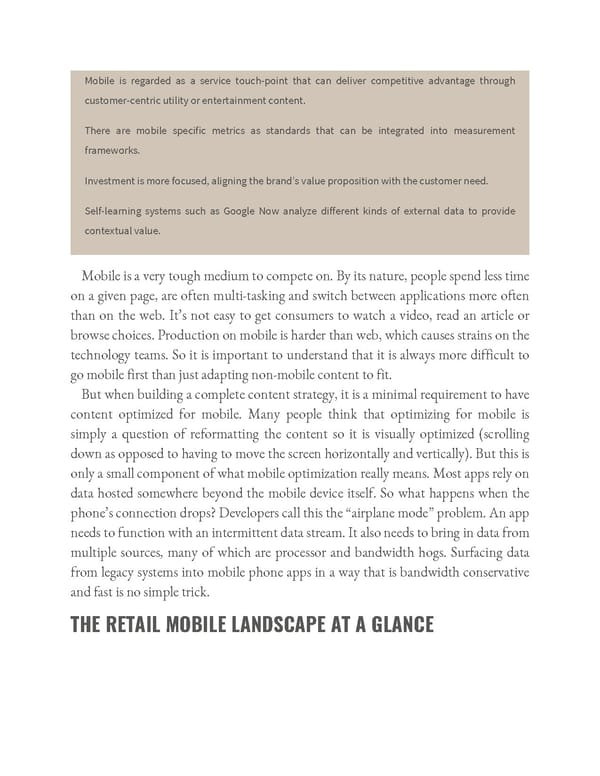Mobile is regarded as a service touch-point that can deliver competitive advantage through customer-centric utility or entertainment content. There are mobile specific metrics as standards that can be integrated into measurement frameworks. Investment is more focused, aligning the brand’s value proposition with the customer need. Self-learning systems such as Google Now analyze different kinds of external data to provide contextual value. Mobile is a very tough medium to compete on. By its nature, people spend less time on a given page, are often multi-tasking and switch between applications more often than on the web. It’s not easy to get consumers to watch a video, read an article or browse choices. Production on mobile is harder than web, which causes strains on the technology teams. So it is important to understand that it is always more difficult to go mobile first than just adapting non-mobile content to fit. But when building a complete content strategy, it is a minimal requirement to have content optimized for mobile. Many people think that optimizing for mobile is simply a question of reformatting the content so it is visually optimized (scrolling down as opposed to having to move the screen horizontally and vertically). But this is only a small component of what mobile optimization really means. Most apps rely on data hosted somewhere beyond the mobile device itself. So what happens when the phone’s connection drops? Developers call this the “airplane mode” problem. An app needs to function with an intermittent data stream. It also needs to bring in data from multiple sources, many of which are processor and bandwidth hogs. Surfacing data from legacy systems into mobile phone apps in a way that is bandwidth conservative and fast is no simple trick. THE RETAIL MOBILE LANDSCAPE AT A GLANCE
 Ogilvy on Advertising in the Digital Age Page 301 Page 303
Ogilvy on Advertising in the Digital Age Page 301 Page 303